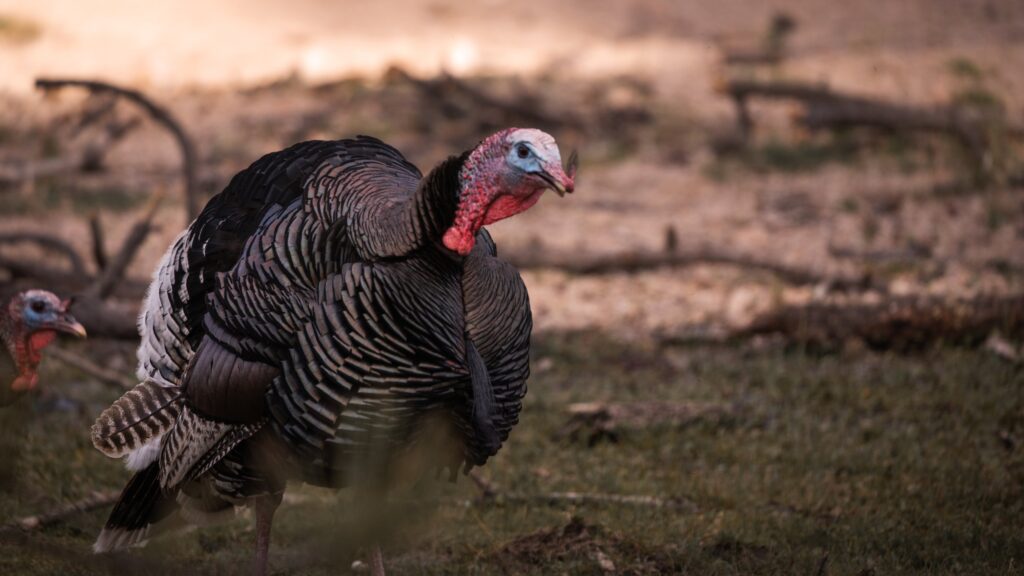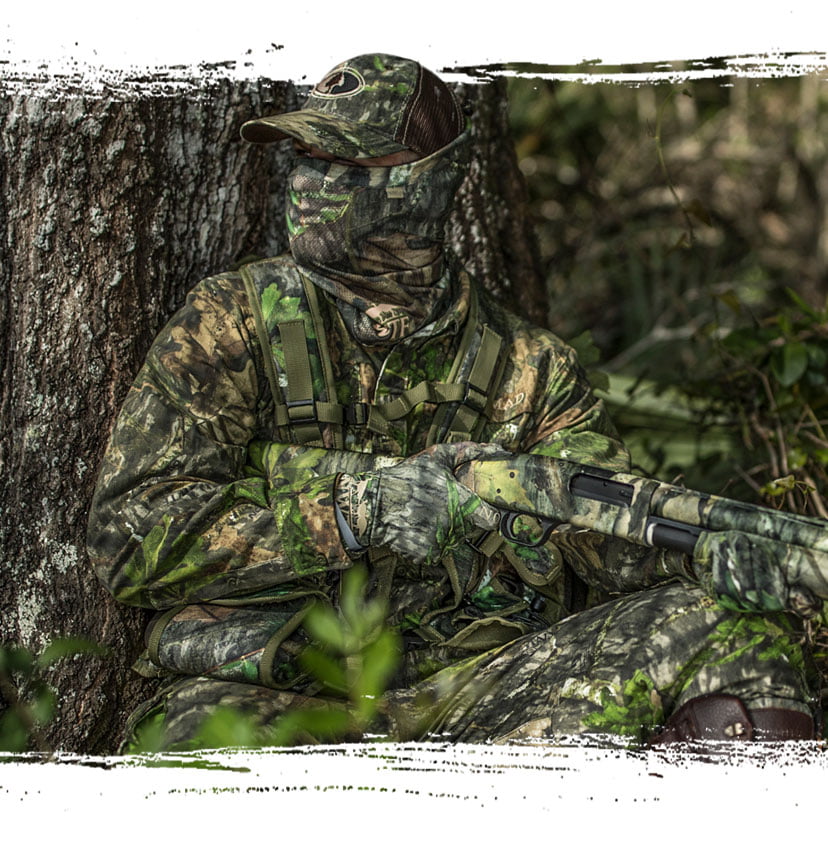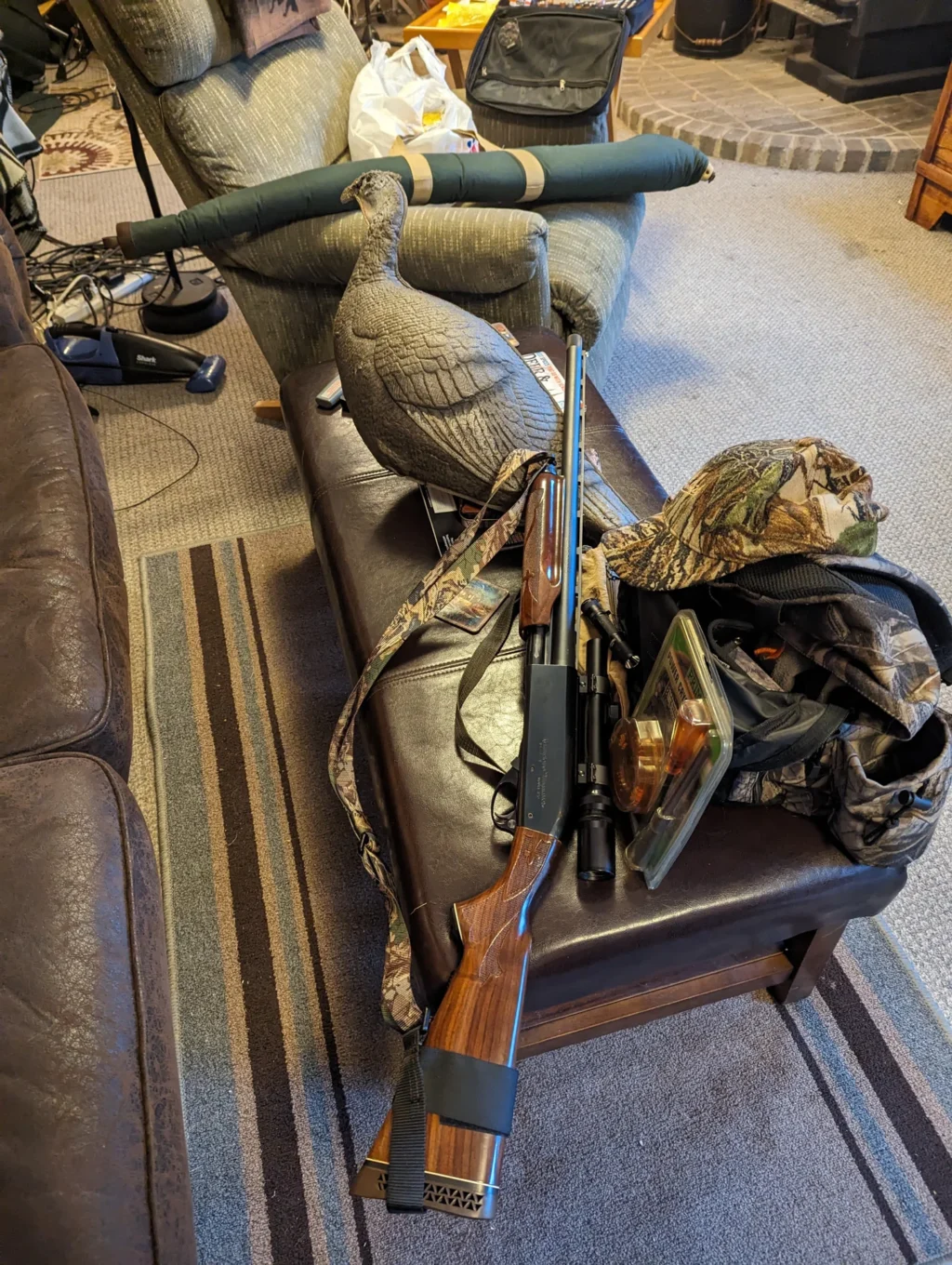Dominate the spring season with our ultimate guide to turkey hunting! Wild turkeys are notoriously intelligent and cautious, making them a coveted prize for experienced hunters. Their keen eyesight compensates for a weaker sense of smell, allowing them to detect even the slightest movement. Successful turkey hunting (2025) requires patience, strategy, and a deep understanding of these wary birds.
This comprehensive guide equips you with the knowledge and skills you need for a safe and rewarding turkey hunting experience. We’ve included expert insights and practical tips to elevate your turkey hunting skills:
- Masterful calling techniques to attract even the most cautious toms
- Strategic blind placement for a concealed advantage
- Effective camouflage strategies to blend seamlessly into the environment
- Essential tips for a safe and successful hunt
Don’t settle for chance encounters – become a master strategist! In addition to the valuable information in this guide, consider using a turkey hunting app like HuntWise to maximize your chances of success. This article also provides a foundation for new hunters, with basic information on preparing for a turkey hunt and links to resources for further exploration of hunting techniques.
So, gear up, refine your skills, and get ready for an unforgettable turkey hunt adventure in 2025!
Wild Turkey 101: Know Your Target Before the Turkey Hunting
Understanding your prey is crucial for successful hunting. While the iconic Eastern wild turkey might come to mind, North America boasts five fascinating subspecies: Eastern, Merriam’s, Gould’s, Rio Grande, and Osceola. Knowing their distinct characteristics can give you an edge in the field during your next hunting adventure.
Meet the Eastern Wild Turkey
The Eastern wild turkey reigns supreme as the most abundant and widespread subspecies in North America. Turkey hunters will encounter these impressive birds throughout the eastern half of the US and parts of Canada.

Eastern turkeys are readily identifiable by their chestnut-brown tail feathers and barred wings. Adult males, or toms, are true giants, tipping the scales at 18-30 pounds. Females, known as hens, are noticeably smaller, weighing around 8-12 pounds. Eastern toms hold bragging rights for having the strongest gobbles and the longest beards among all subspecies, making them prized trophies for dedicated turkey hunters.
The Mighty Osceola: Florida’s Trophy Bird for Turkey Hunters
This magnificent bird, found exclusively in the Sunshine State, boasts unique features that set it apart from its Eastern cousins.

Distinctive dark-brown tail feather tips and near-black wings with minimal white banding make the Osceola a striking sight. Adult males typically tip the scales at 20 pounds, while females range from 8 to 12 pounds. Known for their long legs, powerful gobbles, and impressive spurs, Osceolas present a formidable challenge for even seasoned turkey hunters. Their beards, however, tend to be shorter than those of Eastern turkeys.
Rio Grande: The Desert Dweller

The Rio Grande wild turkey, a denizen of the arid landscapes of western Texas, Oklahoma, Kansas, and beyond, is a worthy quarry. Keep an eye out for the Rio Grande’s unique identifiers during your next turkey hunt. Their tail feathers boast distinctive tan tips, and their wing feathers display a balanced pattern of black and white bars. Their vocalizations, characterized by moderate gobbles and beards, can also aid in identification. Adult males typically weigh around 20 pounds, while females are slightly smaller at 8 to 12 pounds.
Mountain Monarch: Unveiling the Merriam’s Turkey
The rugged peaks of the Rockies hold a special resident – the Merriam’s turkey. This subspecies, prized by many turkey hunters, thrives in the mountainous regions of the West. Look for Merriam’s turkeys sporting light-colored tail feather tips and a striking contrast of white on their wings with minimal black.

These birds, while smaller than their Eastern cousins, are a worthy challenge for any turkey hunter seeking a unique trophy. Adult males typically weigh between 18-30 pounds, while females are lighter at 8-12 pounds. Interestingly, Merriam’s turkeys are known for their softer gobbles and shorter beards compared to other subspecies.
The Elusive Gould’s Turkey

Found only in Arizona, New Mexico, and Mexico’s Sierra Madres, these birds are prized for their rarity. Gould’s turkeys are identifiable by their snow-white tipped tail feathers and long legs. Adult males, weighing 18-30 pounds, are considerably larger than females (12-14 pounds). While their gobbles and beards are moderate, the thrill of encountering this elusive bird makes it a coveted trophy for any turkey hunting enthusiast.
Jewel of the Jungle: The Mesmerizing Ocellated Turkey
While North American wild turkeys dominate the turkey hunting scene, the Ocellated turkey adds a touch of exotic beauty to the avian world. Found in Central America, these birds are a sight to behold.

Ocellated turkeys are renowned for their iridescent plumage, shimmering with rainbow hues. Their grey tail feathers boast blue and gold tips, making them a truly magnificent bird. While smaller than their North American cousins, males still pack a punch, weighing around 11-12 pounds.
Listen closely during your turkey hunting expedition in Central America – the Ocellated turkey’s vocalizations differ from its North American relatives. Their gobble takes the form of a high-pitched “signing,” often preceded by a distinct drumming sound. Interestingly, male Ocellated turkeys lack the characteristic beards found on their North American counterparts, but they do sport impressive spurs.
Cracking the Turkey Code: Mastering Wild Turkey Calls
Successful turkey hunting hinges on understanding your prey’s communication. Wild turkeys possess a surprisingly complex vocabulary, with some estimates suggesting up to 30 distinct vocalizations. While hunters primarily focus on a handful of these sounds, mastering their meaning can give you a significant edge in the field. Let’s delve into the most common turkey calls:
The Gobble: A Territorial Declaration
The gobble is a loud, unmistakable sound – a rapid gurgling often used by male turkeys during the spring mating season. It serves as a declaration of dominance and a way for males to advertise their presence to potential mates. Turkey hunters should be cautious when using gobble calls, especially on public land, as it can attract both dominant toms looking for a fight and spook less dominant birds seeking to avoid conflict. While not a first-line tactic, gobbling can be effective towards the end of the day to entice a roosting tom to respond.
A Simple Cluck Gets Attention
The cluck, a short, staccato sound, often consists of two or three notes. It’s a versatile call used by both hens and toms to get each other’s attention. For hunters, the cluck is a valuable tool. Use it to reassure approaching gobblers that a potential mate awaits, or subtly let a roosted tom know you’re present. The cluck can also be used to encourage a hesitant tom to come closer during a hunt.
The Plain Yelp
The plain yelp, a series of single-note vocalizations, is a fundamental turkey sound used by hens. Its meaning can vary depending on context, but it’s a core element of turkey communication. For turkey hunters, mastering the plain yelp is essential. If you can replicate it convincingly, you’ll have a greater chance of calling in a wary tom.
While these calls provide a solid foundation, remember that every turkey has its own unique “voice”. Each cluck, purr, or cut can have subtle variations specific to the individual bird. Turkey hunters who can hone their listening skills to identify and mimic these nuances will gain a significant advantage in the field. So, keep your ears open, learn the language of the wild turkey, and get ready to elevate your outdoor skills on your next turkey hunting adventure!
Conquering the Seasons: A Guide to Spring & Fall Turkey Hunting
For the dedicated turkey hunter, success hinges on understanding the distinct characteristics of each hunting season. This guide equips you with the knowledge to navigate both the spring and fall seasons, maximizing your chances of a rewarding harvest.
Spring into Action: Prime Time for Turkey Hunting
Spring represents the pinnacle of the chase. This is when wild turkeys are at their most active, making it the prime season to harvest a magnificent gobbler.

Spring coincides with a turkey’s peak breeding season. Toms strut with vibrant displays to attract hens, creating an ideal opportunity for turkey hunters. Their vocalizations are at their most frequent, with gobbles echoing through the woods. Turkey hunters can leverage this by mimicking hen sounds to lure these vocal toms closer. Another advantage of spring turkey hunting is that the birds are typically more dispersed, making them easier to call in and trick with strategic tactics.
The prime window for turkey hunting in most states falls between April and May. However, some regions like Florida kick off their season as early as March. It’s crucial to consult your local wildlife agency’s regulations to determine the specific dates and any permit requirements for turkey hunting in your area.
Fall Turkey Hunting: A Different Approach
While spring reigns supreme for most turkey hunters, fall offers an alternative season with its own set of considerations. Depending on local regulations, hunters may target either males or females during this time. Fall turkey hunting often coincides with whitetail deer season, making it an attractive option to have a turkey tag in your pocket for opportunistic encounters. However, be aware that turkeys tend to congregate in larger flocks during fall, making them more challenging to call in and hunt effectively.
Gear Up for Glory: Essential Tools for Turkey Hunting Success
The thrill of turkey season is approaching! Turkey hunting requires preparation, and having the right gear is paramount. HuntWise users can leverage their program to save on top brands, but what essentials should be on your list? From camouflage clothing to calls and blinds, explore our recommendations to ensure a successful and well-equipped hunt.
The Art of Camouflage

A successful turkey hunt hinges on stealth. In this game, invisibility is key. That’s why proper turkey hunt clothing is crucial. From head to toe, you need complete camouflage to avoid spooking your target. This includes a face covering and thin gloves for added concealment. Don’t underestimate the power of a facemask – it also doubles as protection against the relentless mosquitos that plague the early hunting season!
Pack Smart
Every turkey hunter knows the importance of being prepared. Hauling gear deep into the woods requires organization and accessibility. A good hunting vest is an investment that pays off. It keeps your calls, flashlight, water, decoys, shells, snacks, and other essentials secure, organized, and silent. Many vests even boast comfortable built-in seats for those long periods of waiting
The Language of the Hunt: Mastering Turkey Calls
Turkey hunt relies heavily on communication. The right calls can lure curious gobblers within shooting range, making or breaking your hunt. A box call is a great beginner’s option, offering consistent sound with minimal practice.
As you gain experience, explore slate calls, mouth calls, and locator calls (like crow calls) to trigger a “shock gobble” from your target. Remember, the goal is to mimic the sounds of a hen or fire up a gobbler’s excitement to reel him in. Master basic calls like clucks, purrs, putts, and yelps to become a more persuasive hunter.

The Blind Approach: Concealment with Ground Blinds
Utilizing a ground blind can significantly improve your chances of success in turkey hunt. These blinds can be set up in minutes and completely enclose you, preventing detection. They’re also easy to move and don’t require additional brushing when relocating during your hunt.
Choosing the Right Weapon: Tools for the Trade

While it may seem obvious, selecting the appropriate hunting weapon is crucial for a successful turkey hunt. The most common choice is a shotgun, ideally a black camouflage model to minimize visual attention. Shotgun gauges come in various options (10, 12, 16, and 20), and a full choke tube is recommended for a tighter pattern and lethal shots at 30-40 yards. The most popular turkey load consists of 4-6 shot, offering a denser downrange punch with heavier pellets. While some hunters prefer the challenge of using a bow, opting for a standard broadhead for body shots and a guillotine-style broadhead for decapitation.
Decoys or No Dice?

When packing for your next turkey hunting expedition, consider the strategic use of decoys. If you’re hunting in dense woods with low visibility, attracting a turkey within 30-40 yards likely relies solely on your calling skills. However, for open areas like field edges, utilizing a hen or jake decoy can trigger breeding or territorial instincts in a tom. While hens are generally preferred, a combination hen and jake setup can be particularly effective in challenging even aggressive two-year-old turkeys. Avoid using strutter decoys, as they tend to scare off most birds. However, they might be a strategic option in confined areas with dominant gobblers.
Beyond the Gear: Essential Tips and Tricks for Turkey Hunting Success
So, you’ve scouted a location and secured the right gear – now it’s time to put those elements into action! This section dives into valuable tips and tricks to help you harvest a magnificent gobbler during your next turkey hunting expedition.

Understanding the Turkey’s World: Habitat Preferences
Like most creatures, turkeys have basic needs that dictate their habitat choices. Food, water, roosting trees, open fields, and ample cover are all essential for their survival. Interestingly, food plots designed for whitetail deer can also benefit turkeys (and hunters!). Turkeys are drawn to the presence of grubs and green foliage, while plots of clover and winter wheat attract insects – a crucial source of protein for egg-laying hens. So, don’t be afraid to plant a food plot to attract multiple species on your property.
Uncover Turkey Habits like Scouting & Patterning
Turkey hunting success hinges on understanding a tom’s routine. These birds tend to have predictable travel patterns, utilizing specific fields, open areas within the woods, and roosting sites. Investing time in proper scouting techniques before your hunt can significantly increase your odds of a successful harvest.
Early morning listening and glassing from strategic locations (like roads) are valuable tools for identifying feeding areas and roosting spots. Aim to locate the roost site and plan your approach for an early morning hunt. Knowing a turkey’s typical schedule (active at dawn, mid-morning, and evening) can also be advantageous. Spotting a strutting tom and observing the number of hens in his company allows you to strategize your calling tactics. If a tom has fewer hens, he might be more susceptible to being lured away.
Roosting Secrets: Unlocking the Turkey’s Nighttime Hideout
Pinpointing a turkey’s roost is a critical factor in achieving success during your turkey hunting expedition. As the sun dips below the horizon, a turkey’s focus shifts from display to finding a safe haven for the night. By observing where they settle in after sunset, you gain valuable insight into their nighttime roosting location. Listen for telltale sounds like breaking branches or flapping wings to pinpoint the roost. If you can identify this area the night before your hunt, you can strategically set up nearby for a successful morning hunt.
The Art of the Call: Less is More
Patience and restraint are key when it comes to calling turkeys in during a hunt. A common question among new hunters is how frequently to use calls. A good rule of thumb is to limit your calls to once every 5-10 minutes, even if the gobbler seems particularly excited.
Remember, turkeys have a limited attention span and are naturally wary creatures with exceptional eyesight and hearing. This is where your ability to sit still and wait for the perfect shot becomes paramount. One call to avoid is the “purr and cluck,” often used by hunters to attract a tom. Hens actually use this call to express agitation, so unless you’re trying to keep a hen in the area, it’s best to leave this one out of your repertoire.
Weather or Not
Temperature plays a significant role in turkey vocalizations and movement patterns during a hunt. Colder temperatures can make turkeys less active and less vocal. Windy conditions can also hinder their ability to hear your calls. By understanding the weather forecast for your planned hunt days, you can tailor your gear, call selection, and overall strategy to maximize your chances of success.
Turkey hunting offers a unique blend of challenge and reward, captivating experienced hunters season after season. But its appeal extends far beyond, serving as an excellent introduction to the world of hunting for newcomers. The experience itself is deeply rewarding, from witnessing the breathtaking sunrise to finding solace in the tranquil quietude of the woods.
While success isn’t guaranteed, this comprehensive turkey hunting guide equips you with the knowledge and tools to significantly enhance your chances of bagging one of these elusive birds.






